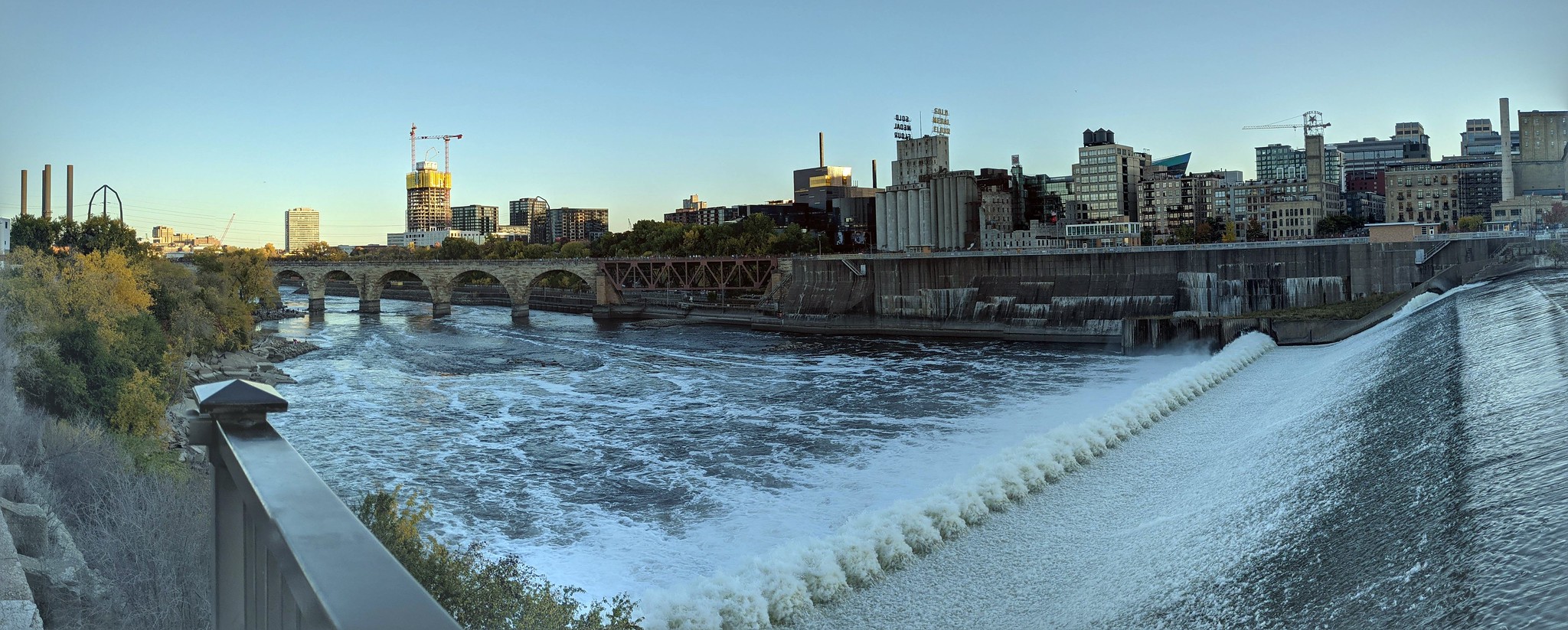'Do you think nature has surrendered to the U.S. Army Corps of Engineers? I don't think so.'
After it collapsed in 1869, St. Anthony Falls was stabilized with this concrete apron as well as a 40-foot high underground cutoff wall. Though critical, neither structure is regularly maintained. (Photo by Tessa Enroth of FMR)
Over 140 years ago, the U.S. Army Corps of Engineers stabilized St. Anthony Falls after attempts to tunnel through the Mississippi River's fragile bottom led to the falls' collapse and a swirling whirlpool in the middle of downtown Minneapolis.
Today, many of us have seen the concrete apron that St. Anthony Falls now runs over, designed to prevent further erosion and collapse of the riverbed. What we can't see is the underground concrete wall, called a cutoff wall, that runs 40 feet down and provides additional stability to the falls.
Without this support, the river's rushing water would erode the last remaining feet of the limestone river bottom that remain upstream of the falls, leading to another collapse.
The consequences would be dramatic. Water levels could drop too low to supply crucial upstream drinking water intakes. Water supplies for 1 million Twin Cities residents, hospitals, schools and even fire hydrants could dry up within days.
The river bottom's collapse would also threaten roads and bridges, including the Third Avenue bridge, which sits just upstream of the falls near the edge of the limestone layer.
In short, the cutoff wall underneath St. Anthony Falls is a critical piece of infrastructure. But you wouldn't know it by how the wall is inspected and maintained... because it's not inspected and maintained. At all.
A wall without an owner
No one knows who owns the cutoff wall. No party, including the Army Corps who constructed it, will take responsibility for it. It's not clear when in its 140-year history the wall was last inspected.
The Corps' plan to divest its ownership of the Upper St. Anthony Falls lock (which adjoins the cutoff wall) presents another wrinkle; lock ownership could end up in private hands that can't necessarily be trusted to maintain the infrastructure in the public interest. It's not clear what happens to the cutoff wall in this scenario.
FMR and our partners have been raising the alarm about this problem since it was uncovered in recent months. FMR board member John Anfinson has led this work and conducted many hours of research and outreach in an attempt to untangle the issue.
Now the Star Tribune has written a clear, thorough overview of the cutoff wall problem, complete with diagrams and extensive interviews with John and others. If you're curious to learn more about the cutoff wall, we highly recommend diving into this article and checking out the TPT Almanac interview with reporter Eric Roper.
What will happen next?
We believe that the Army Corps should be responsible for the cutoff wall that they built and should conduct an immediate inspection of its condition. Elected leaders, ranging from Rep. Ilhan Omar to Minneapolis mayor Jacob Frey, agree.
There may be opportunities for residents to share their concerns with elected officials as this issue continues to unfold. To hear about any opportunities for action, become an FMR River Guardian.
